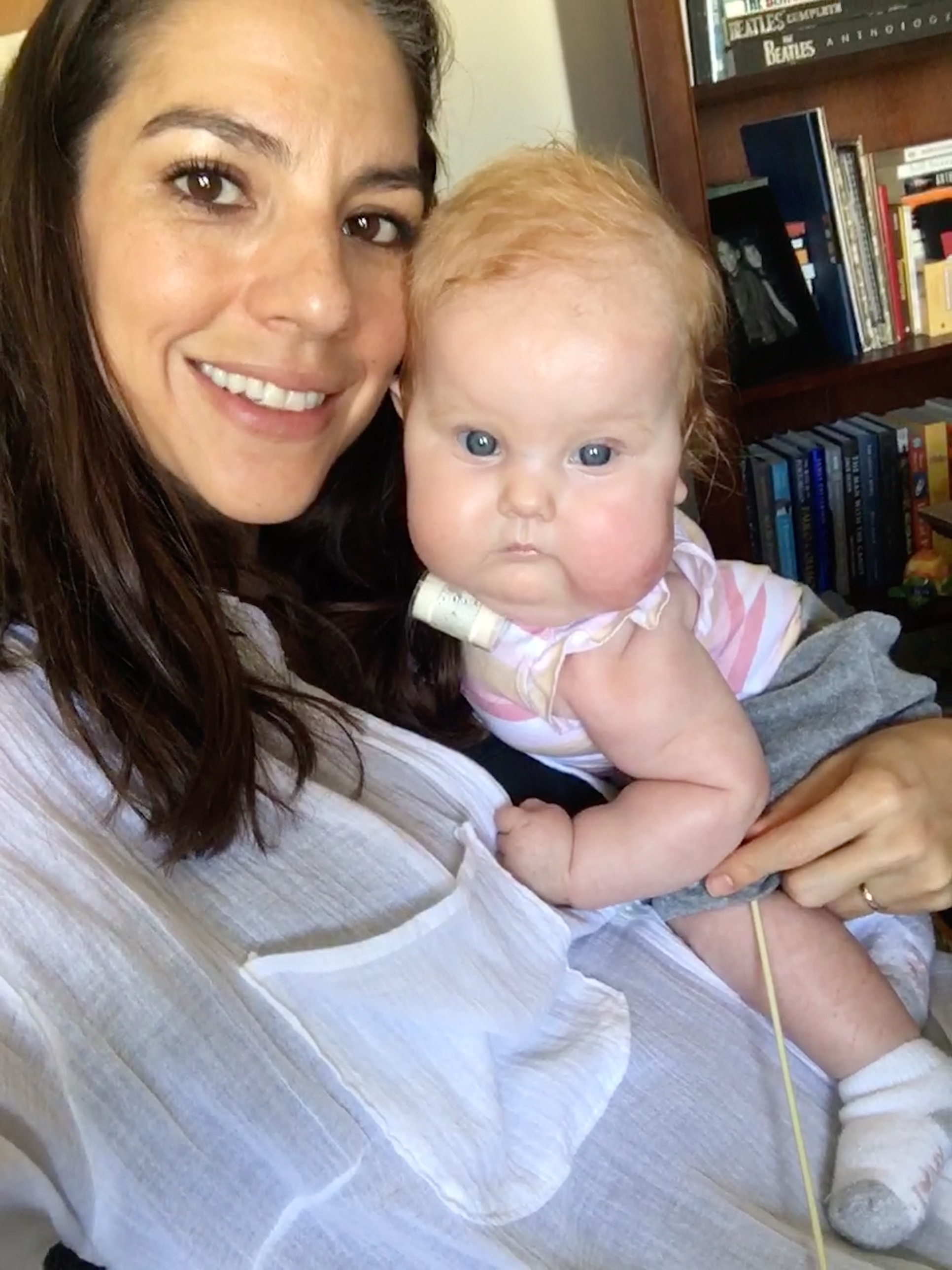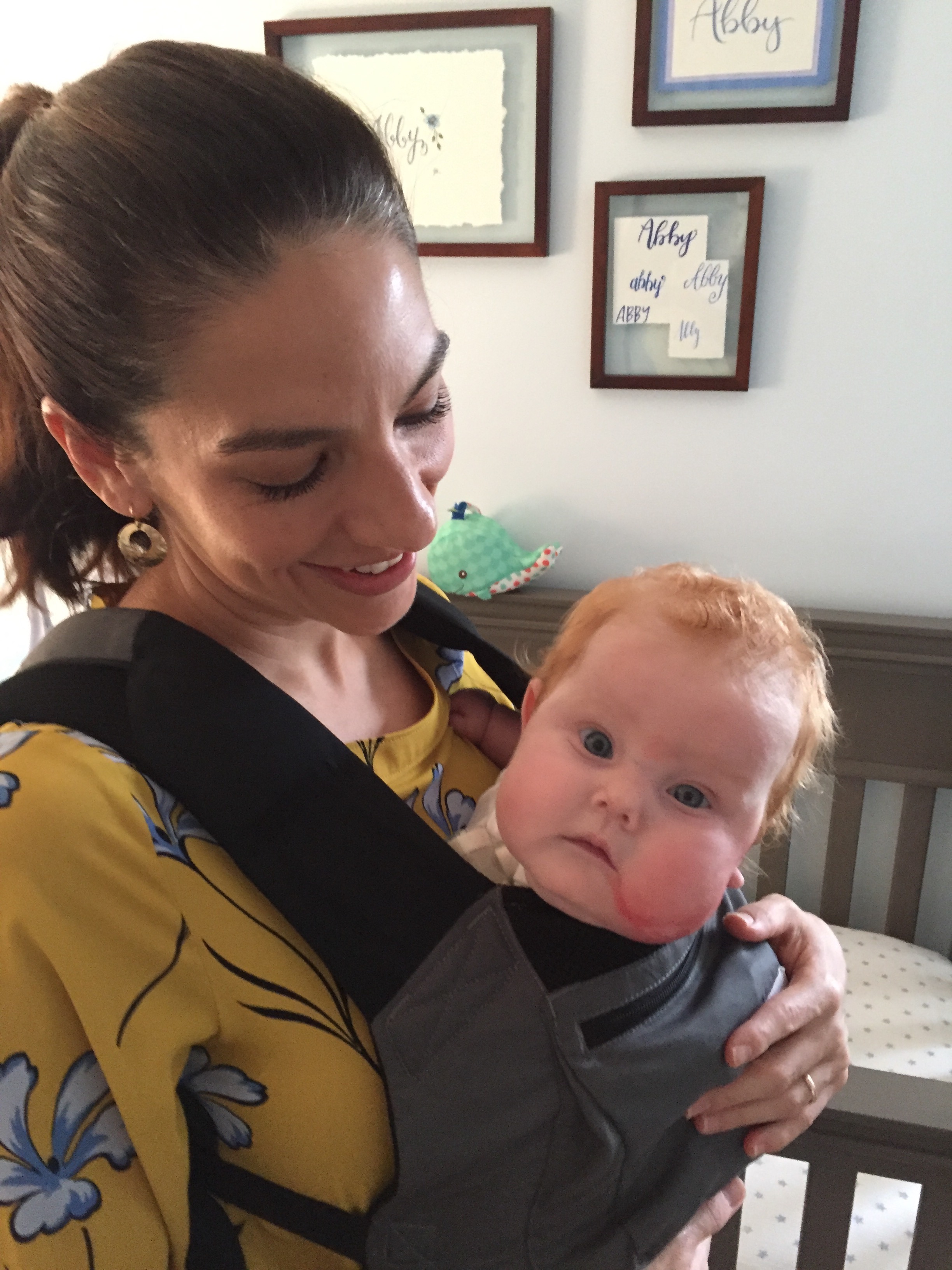Life after the death of my child
 Before my eight-month-old daughter, Abby, died unexpectedly, I thought I knew plenty about grief. The pervasively popular five stages of grief model, developed by Dr. Elisabeth Kübler-Ross, was familiar to me: Feelings of denial, anger, bargaining, depression and finally acceptance would need to be worked through before coming out whole again on the other side.
Before my eight-month-old daughter, Abby, died unexpectedly, I thought I knew plenty about grief. The pervasively popular five stages of grief model, developed by Dr. Elisabeth Kübler-Ross, was familiar to me: Feelings of denial, anger, bargaining, depression and finally acceptance would need to be worked through before coming out whole again on the other side.
As it turns out, grief, like life, is not that neat.
As I resurfaced after Abby’s death, a colleague gave me a book titled, Getting Grief Right by Patrick O’Malley. O’Malley is a psychotherapist whose own young son died after overcoming complicated medical issues at birth – a story strikingly similar to mine. O’Malley recognized how misguided his training on grief had been. A position, I would learn, that is somewhat reflective of our larger cultural and clinical views on grief.
Our evolving understanding of the grieving process
Along with obliterating expectations for how long grief should last or what it should look like, experts like O’Malley are revealing that the five stages of grief model developed by Kübler-Ross was based on empirical work conducted with terminally ill patients, not bereaved individuals. The model reflected how those facing death deal with it, and along the way the model was incorrectly extended to grief.
Later in life, Kübler-Ross noted that the model wasn’t intended to be a one-size-fits-all approach to grieving, with each stage presumed to be linear or required. But, the seemingly straightforward model dominated in psychotherapy and pop culture during the 1970s and has largely stayed.
It makes sense why it’s popular: we wish to avoid pain and use technology as a means to control or prevent death. When pain can’t be avoided, there’s a desire to overcome it and, given our innate knack for reasoning, search for meaning.
To change our cultural course surrounding grief, it helps to know that there isn’t one “right way” to grieve. Instead, there are various factors that may shape what your grief will look like. For example, your relationship to the person and the circumstances surrounding their death. Think, “How deeply did I love this person?” O’Malley suggests that will give you a sense for the depth and length of your grief.
But, it’s not just that. Some suggest that “out-of-order” deaths – like accidents, tragedies, and child death – may carry extra weight for the bereaved.
Using these tools to navigate my own grief
Abby’s death was an out-of-order death. It’s incredible to think of what she overcame, and didn’t. She faced exceedingly complicated medical issues starting through her first few months of life. At three months of age, we brought her home from the NICU for four more happy and healthy months. Then, an unexpected infection that she fought mightily for the next month before we learned her brain had suffered irreversible and life-devastating damage. Her last day of life was July 6, 2017.
When my husband and I left the hospital that day, we were armed with grief support materials. Reminders about the five stages model and warnings of impending secondary losses were not helpful.
In the initial phase of grief, overwhelmed with more emotions than I knew existed, digestible, practical information and support resources provided by the hospital’s grief support team were helpful. Practical tips to healthy mourning included journaling, creating artwork, crying, telling the story, and talking to others.
After the initial phase, resources like O’Malley’s book were crucial. Learning that Abby’s death wasn’t something I needed to “get over” heaved off an incredible weight on me.
Learning not to add conjunctions to every thought was also helpful. This moved me from, “at least I had her while I did,” or “I miss her, but am so grateful for the life she lived,” to recognizing that “missing her” and “being grateful for her life” can be two independent clauses.
I miss my daughter every moment of every day. I’m sad without her and I’ll carry this sadness the rest of my life (because I can no longer carry her, this is a weight I want and need to bear).
I’m grateful for my daughter’s life. The joy she brought and continues to bring me fuels me daily.
These are complicated, but not competing feelings.
Grief is hard. Even with support, it can be isolating and lonely. For me, what helps is telling my daughter’s story, which writers like Joan Didion have beautifully done with their own grief. I prefer taking my daily dose of grief to fold my daughter into my life in ways that make me feel good and honor her.
This strategy seems to produce far fewer and more manageable side effects than turning away from my grief or thinking of it as something to work through.
In a time when nothing made sense to me, this did: Why would I ever “get over” the death of the person I love most of all?
-By Jill Oliver Robinson, M.A., research manager in the Center for Medical Ethics and Health Policy at Baylor College of Medicine



